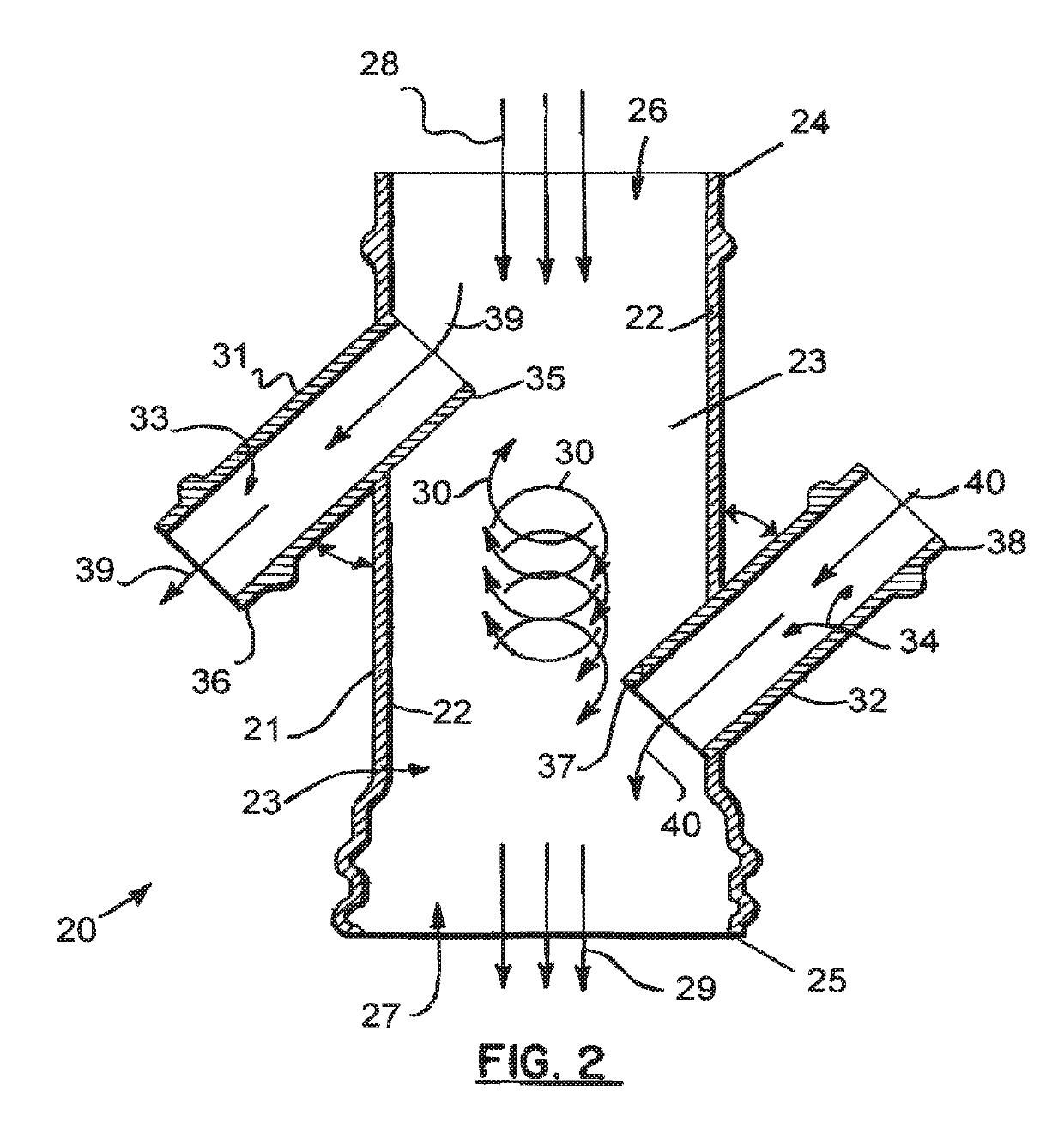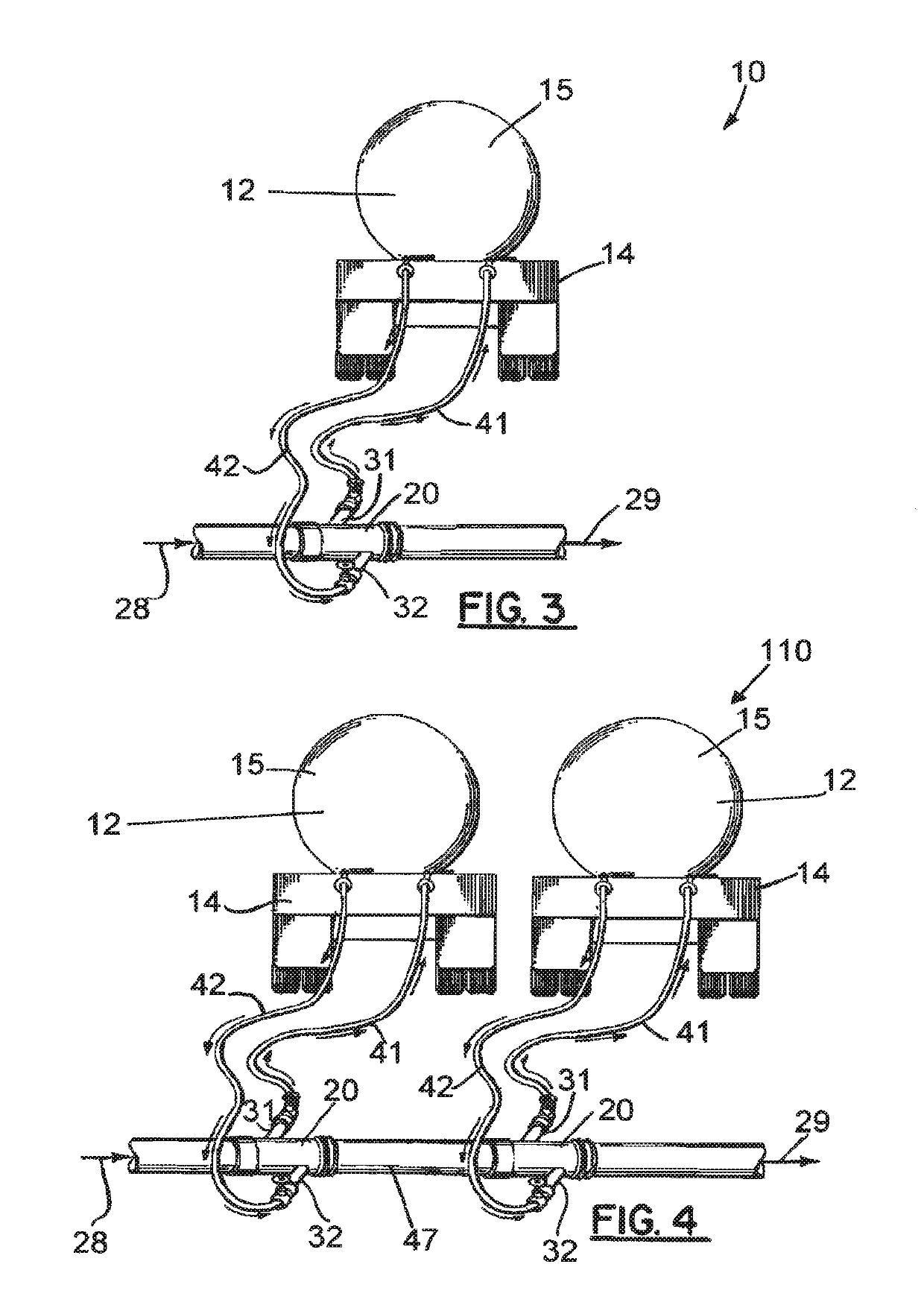Water heating apparatus for continuous heated water flow and method for use in hydraulic fracturing
a technology of water heating apparatus and heated water flow, which is applied in the direction of fluid heaters, lighting and heating apparatus, and wellbore/well accessories, etc., can solve the problems of significant thermal loss, unsuitable cold temperature for the fracing process, and poor flow rate of production, so as to facilitate hot water flow, increase the temperature of cold water, and facilitate the effect of mixing
- Summary
- Abstract
- Description
- Claims
- Application Information
AI Technical Summary
Benefits of technology
Problems solved by technology
Method used
Image
Examples
Embodiment Construction
[0049]FIGS. 1-4 and 6-12 show preferred embodiments of the apparatus of the present invention, designated generally by the numeral 10 in FIGS. 3 and 6. Alternate embodiments are designated by the numeral 110 in FIG. 4, by the numeral 210 in FIG. 7, by the numeral 310 in FIG. 8, by the numeral 410 in FIG. 9, by the numeral 510 in FIG. 10, by the numeral 610 in FIG. 11, and by the numeral 710 in FIG. 12. In FIG. 6, a water source 11 can be a reservoir, lake or other source of water.
[0050]Mobile heater apparatus 12 is used to super heat water for use in frac operations in an oil well. In general, such frac operations can be seen in U.S. Pat. No. 4,137,182, hereby incorporated herein by reference.
[0051]Mobile heater 12 is a transportable heating apparatus and includes a truck 13 and a trailer 14. Trailer 14 carries a heating vessel 15 which can be, for example, a tank or piping that holds water and that can be heated with electrical or other heating elements or with propane or preferabl...
PUM
| Property | Measurement | Unit |
|---|---|---|
| angle | aaaaa | aaaaa |
| angle | aaaaa | aaaaa |
| temperature | aaaaa | aaaaa |
Abstract
Description
Claims
Application Information
 Login to View More
Login to View More - R&D
- Intellectual Property
- Life Sciences
- Materials
- Tech Scout
- Unparalleled Data Quality
- Higher Quality Content
- 60% Fewer Hallucinations
Browse by: Latest US Patents, China's latest patents, Technical Efficacy Thesaurus, Application Domain, Technology Topic, Popular Technical Reports.
© 2025 PatSnap. All rights reserved.Legal|Privacy policy|Modern Slavery Act Transparency Statement|Sitemap|About US| Contact US: help@patsnap.com



